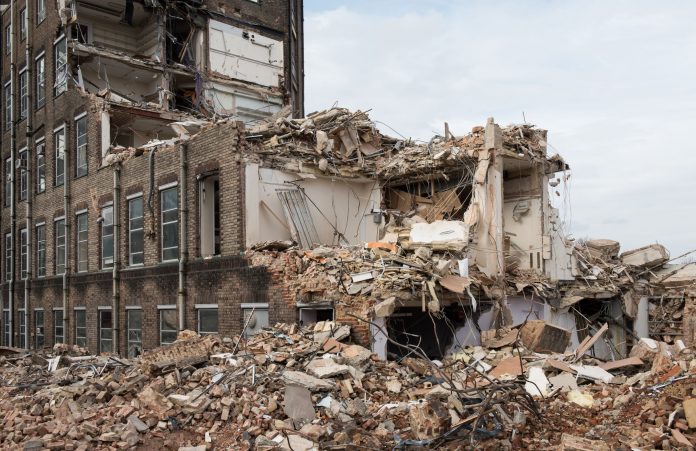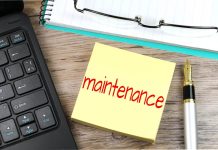Nature is a paradoxical phenomenon. It has tremendous ability to nurture, grow and foster. On the other hand, no other force is as destructive as nature itself which is why we should invest in good appliances like an inverter refrigerator or an inverter ac.
According to Ayurveda, the famous Indian holistic healing system, the earth is made of 5 main elements known as ‘Pancha Mahabhuta’. Those are Earth (bhumi), Water (Jal), Fire (Agni), Air (Vayu) and Space (Akash).
Interestingly, the human body is also made of a combination of these elements. Each one can cause serious complications to us if mishandled.
Insurance companies provide us with cover against various events such as accidents, illnesses, death etc. They also insure us against the damage caused by fire.
Not everyone can have a piece of comprehensive knowledge about specifically fire-related insurance. The below write-up will comprehensively inform about fire insurance, various types and steps to follow to claim it.
Table of Contents
Types of Fire Insurance
Fires cause more than just financial loss. The emotional damage caused by such accidents can cause scars that don’t heal in an instant.
However, one can opt for a perfectly fitting insurance policy that covers damage caused by fire especially for home appliances. These provide not only financial aid but also a tinge of relief after a huge loss and before reconstructing everything again.
Mainly, there are 11 types of fire insurance policies in India; classified into two categories. They are: Fire insurance policy for fixed assets and, fire insurance policy for non-fixed assets (Stocks etc.)
Fixed Assets
Replacement Value Policy
This strategy operates on the principle of replacing the asset that is compromised due to a covered risk, as the name implies. The insurance provider pays for the replacement cost of the impaired asset.
The replacement value is measured based on the asset’s age as the asset’s market value minus depreciation. The cost of construction of the house is covered by the policy if the assets are insured.
In the case of other properties, the value of their replacement is measured and paid in the form of a claim.
Reinstatement Value Policy
Under the substitution value policy, a reinstatement value policy is nothing but an added provision. The insurance firm undertakes, as per this provision, to replace the damaged property in its initial condition before the accident.
The reinstatement clause only refers to fixed assets, such as homes. Under this provision, other properties cannot be secured. Besides, only if you want the reinstatement option in the fire insurance policy can you get coverage on a reinstatement condition.
If the provision is not chosen, claimants will only be paid based on the replacement value.
Non-Fixed Assets
Floater Policy
For properties that are situated at various locations, this policy is perfect. For all properties, a single strategy can be implemented, and the assets will be secured on a floating basis.
However, each location and the value of the properties at each location will have to be specified to benefit from coverage.
Declaration Policy
For assets whose value changes throughout the year, like stocks in a company, a declaration policy is suitable. A conditional amount insured is obtained, and the premium is billed for the same under this scheme.
The amounts insured will reflect the insurance company’s highest risk. When a month is over, the maximum value of the fluctuating asset is registered and declared. The median of the stated value is then measured, and the policy becomes the real insured amount.
You can claim a premium refund if the real amount insured is less than the preliminary sum insured.
The market value of the asset is taken into account to determine the claim number.
Floater Declaration
There is an integration of a floater policy and a declaration policy. Assets deposited at various locations whose prices fluctuate throughout the year can be protected under a single policy.
Specific Policy
The loss is compensated by this policy up to a certain sum. The real amount is the guaranteed sum of the policy, which is normally lower than the asset’s actual worth.
Comprehensive policy
A comprehensive strategy has a broad spectrum of coverage, as the name implies, and protects the asset against the highest number of threats.
Valued Policy
In a valued scheme, properties whose market value cannot be measured can be covered. Under the scheme, coverage of the assets’ accepted value is required, which is the best estimation of the market value of the asset.
Valuable Policy
Under this scheme, at the time of purchasing the policy, the amount insured is not determined. At the moment of loss, the demand sum is determined.
Average Policy
The average policy operates on the ‘Average Clause’ concept. When you use an insured amount that is lower than the actual price of the items, an average clause is valid. In any case, you don’t get the full sum of a claim when it is made.
You get an average claim that is assessed concerning the insured amount you have paid. For e.g., assume an asset’s value is INR 1 lakh, and you use an INR 80,000 insured amount.
Since you have insured just 80% of the value of the estate, you will obtain 80% of the claim settlement. Thus if the claim were for INR 50,000, the insurance provider will enforce the average clause and only pay INR 40,000 for the case.
Consequential Loss Policy
This policy protects the loss of profit that you may incur when your company is disrupted by fire.
Steps to claim a fire insurance
If one is wondering about the course of action to follow to claim fire insurance, below are the steps mentioned:
Step:1 Communicate With Your Insurance Company
First of all, let the Insurance Firm know about all the destruction that happened due to the fire accident. You don’t have to be accurate; here an approximate damage report works. Make sure that all burned materials are preserved as proof when assessing the damage.
To determine the total damage, the insurance company will then send a professional surveyor. Also, guarantee that you do not redecorate or fix any harm to the property during this period as it can delay the reimbursement process.
Step:2 Fill The Claim Request Carefully
You will be prompted to file a claim after contacting the insurance provider. This is where accuracy is needed for you! Make sure that you specify each specification on the claim request form.
The claim request form would demand that the following things be recorded accurately:
– Fire Explosion Date
– The Damage Category
– Any associated accidents
– State of properties
– Summary of products damaged
– Place of the estate
– Others enlisted
– Copy of Police FIR (In the event of police involvement)
Step 3: Be Co-operative
Although being in such a situation could be a tough time for you, we encourage you to have confidence in the insurance industry. The organisation will select a certified surveyor who will assess total damages.
Note – the estimate of the claim would be based on the surveyor’s analysis, which is why we suggest that you completely comply with the surveyor. Send all the original documentation and proof needed for the loss evaluation by the surveyor.
Provide all the details needed and your full cooperation!
Step 4: Do Not Hurry
Perhaps you are in a rush to demand reimbursement and fix the harm. We demand that you take your time! We still seem to forget stuff in a rush, maybe something important that we missed out on the first look.
Take the time, then and examine all the losses that happened before the lawsuit was filed. The more time you take, the more you’ll be sure of your argument.
File your claim until you are completely assured, and let the insurance professionals do their work.
Documents Required
– Properly completed claim form
– Certificated copy of the regulation
– Photographs of property damaged
– A study by Fire Brigade
– Copy of the Police FIR (if any) Report
– Copy (if any) of a newspaper article
– Previous experience of allegations (if any)
Factors To Be Considered Before Buying A Fire Insurance Policy
The kind of danger being protected
Depending on the type of risk that you face, pick a strategy. Select a floater policy if you have to ensure properties at several locations. If the worth of your assets can not be precisely ascertained, it would make more sense to have a valued policy. So, choose a plan based on the type of danger you face.
The essence of the asset that you would like to insure
As mentioned earlier, under different types of plans, various types of assets may be insured. You may choose replacement value or reinstatement value policies for real estate and fixed assets, although there are other policies for other assets. So, pick a scheme that suits the asset to be insured.
Risks of wrong exposure
Consider the types of risks to which the asset is exposed and select the right strategy afterwards.
Period Coverage
Before selecting the most acceptable fire insurance policy, it is important to know the time during which you need to take out the coverage.
Concluding, we can never anticipate when we will be stuck by a fire-related accident. So if it ever does, it’s imperative to be prepared to deal with one. It is hard and exhausting to deal with the fallout of a burn, so learning how to file a fire insurance claim is crucial.
LawSikho has created a telegram group for exchanging legal knowledge, referrals and various opportunities. You can click on this link and join:
 Serato DJ Crack 2025Serato DJ PRO Crack
Serato DJ Crack 2025Serato DJ PRO Crack










 Allow notifications
Allow notifications



